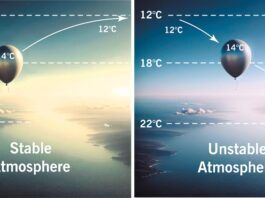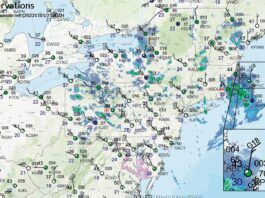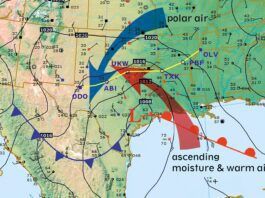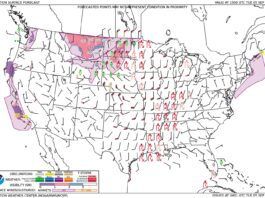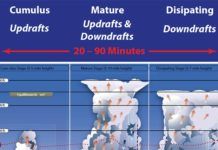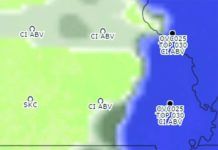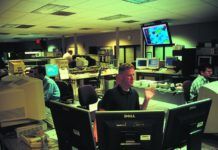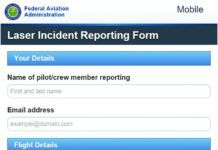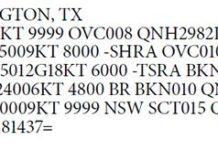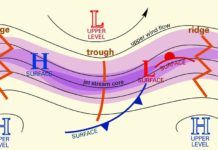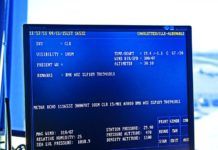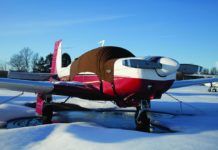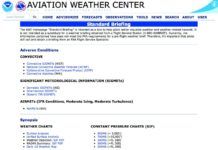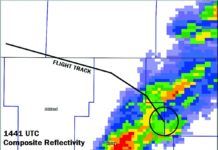Using Spherics
Both spherics and NEXRAD have blind spots and neither is infallible. Spherics devices can have false negatives because they dont see those static discharges until they happen. While most cells with dangerous opposing currents also produce significant static, nature is inherently unpredictable and the static discharges can lag. Of course, the delays in getting NEXRAD images to the cockpit can lead to significant errors. Plus, radar only seeing precipitation, not turbulence, can cause difficulty interpreting the image.
Introducing Graphical Forecasts for Aviation
In the summer of 2014 the FAA published in the Federal Register its intent to do away with the Area Forecast (FA) and replace it with digital and graphical alternatives. The agency wrote that the FA was a broad forecast of limited value and that existing, better, alternatives existed.
Wake Turbulence: Silent But Deadly
A low morning fog crept onto the airport as I cleared a CRJ-900 regional jet for takeoff. The RJ lifted, passing just above the vaporous wall, and I switched him to Departure. I waited, watching for something I dealt with every day as an air traffic controller, but had never witnessed.
Getting Blasted
Wingtip vortices aren't the only type of disturbed air concerning pilots and controllers. According to the 7110.65's Pilot/Controller Glossary, wake turbulence includes "thrust stream...
Nowcasting Your Flight
My goal in this column is to bring the art and science of forecasting to pilots. This is because forecasts arent perfect and still wont be in the foreseeable future. This is not an indictment of the profession, but an acknowledgement of the realities of the forecast problem. For example, a single balloon launch is used to represent the 400,000 cubic miles of troposphere over Arkansas, and only happens every 12 hours. This is why good forecasters are skeptical of models and blend them with experience, intuition, and their own analysis before making a forecast.
ATC to the Rescue
As a pilot you most certainly know that just about everything in aviation has a checklist. We controllers have our own checklists for a multitude of hazardous situations, unauthorized laser illumination included. I pulled up the appropriate checklist while the helo maneuvered.
Who’s Looking Matters
Recently, a friend who flies out of Houston Hobby (KHOU) shared something thats bothered him for some time. Just seven miles east of Hobby is Ellington Field (KEFD), a joint-use military/civilian airport. Both airports issue TAFs. Hobbys TAFs come from the NWS and Ellingtons are issued by the military. Interestingly, sometimes there is a great disparity between the forecasts. Do they each have their own biases? Are they looking through different glasses? Its like asking two witnesses what they see in an accident that hasnt happened yet.
Flight-Level Winds Aloft
Winds aloft charts have long been a staple of flight planning, if at least just to figure wind correction angles and groundspeed. But in Wx Smarts, we try to help you more fully exploit weather products to think more like a forecaster than a person just checking off boxes during preflight.
Weather Multitasking
For the moment, well begin with a nickel tour of both the ATC and the national aviation weather systems. Naturally, theres some overlap between them. The FAA air traffic control system is one big ol network. The chain of command begins with the ATC System Command Center in Virginia, which provides oversight and coordination between the biggest ATC facilities, the Air Route Traffic Control Centers.
Winter Flight
For those of us flying IFR in locations with a high probability of a white Christmas each year, we often need to recalibrate our aeronautical mindset from summer. We have to switch our weather default from Where are the thunderstorms? to Where is the ice? Winter brings us more challenging preflights, engine starts and airport operations. Even though we are all experienced instrument pilots, its still worth taking a few minutes to think about cold weather operations as we head into the worst of the season.
Flight Planning Apps Are Replacing Flight Service Stations
Lockheed Martin's Flight Service Stations are still open, but the services for pre-flight briefing and cockpit assistance are dwindling fast. The FSS now pushes for more pilot self-assistance as it is gradually being replaced by digital applications.
Weather Report: Flying with Parcel Acceleration and Vertical Wind Sheers
The National Transportation Safety Board archives reveal some serious considerations for general aviation pilots who venture out into ANY unfamiliar condition. Lets examine a couple of noteworthy accidents using some of the highest caliber weather products available to meteorologists. Using these tools, well try to figure out where things went wrong. Unfortunately, todays tools and the expertise behind them werent available to the pilots involved in the accidents. But we can use this knowledge to find lessons that can be learned for pilots who might someday find themselves immersed in similar predicaments.


